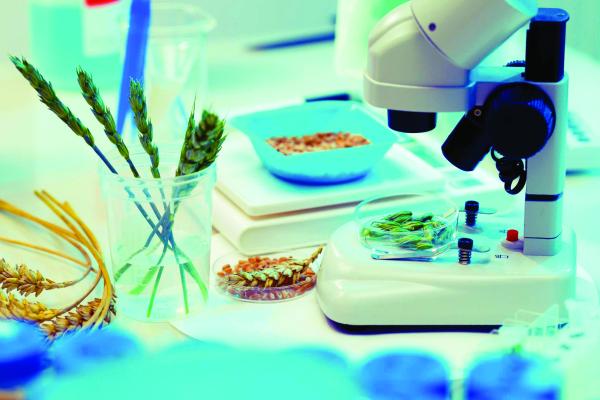Food
In 2010, an 800-ton water-cooled chiller was installed at the SFP plant to provide process chilled water to support the active diffusion process in the plant. The 800-ton chiller was connected to a common header with a 600-ton and a 1,000-ton chiller in a closed-loop system supporting the production process. The chillers run year-round to create a constant 40°F water temperature for production equipment in the plant.
An Illinois food service products manufacturer now saves nearly 60% of their base annual cooling energy costs through improvements made in three phases over several years. The plant, which has a 1200 ton chilled water plant, implemented upgrades including pump and tower fan VFDs and enhanced function controls, free cooling, and chiller compressor drive retrofits. The revisions built through successive phases to capture further benefits from more complete utilization of the preceding steps’ capabilities.
[ Read Full Story ]
The 2022 International Production & Processing Expo (IPPE), was held January 25-27, 2022 in Atlanta with more than 500,000 square feet of exhibit space and 1,140-plus exhibitors. Attendee numbers had not been released when this was written. Sponsored by the U.S. Poultry & Egg Association, American Feed Industry Association and the North American Meat Institute, IPPE is the world's largest annual poultry, meat and animal food industry event of its kind.
[ Read Full Story ]
Chiller & Cooling Best Practices Magazine spoke with Tom Pagliuco, Executive Director Global Energy Engineering at AbbVie, Inc. about best practices for optimizing chilled water systems in today’s pharmaceutical operations.
[ Read Full Story ]
Industrial automation and process applications requiring a chiller or heat exchanger can come in all types of shapes and sizes, and cooling capacity demands can range from a few hundred Btu/hr. for bench top lab equipment to many million Btu/hr. for laser applications. Chiller sizing for large-scale end users such as beverage, chemical or plastics manufacturing usually will demand central systems to achieve the massive cooling capacity requirements compared with small- to medium-range point of use automation applications. These unique differences become more challenging for original equipment manufacturers (OEMs) as machine designers must anticipate a wide range of end-user operating environments and operator skill levels when specifying chillers or heat exchangers in contrast to end-user facilities where cooling capacity requirements are location specific and operator skill levels are known.
[ Read Full Story ]
Cooling large buildings typically requires the use of air- or water-cooled chillers that produce chilled water, which then cools the air. About 39% of buildings over 100,000 square feet use chilled-water systems employing various refrigeration compressor designs.
[ Read Full Story ]
The ComEd® Energy Efficiency Program offers incentives to help facilities save money by improving the efficiency of their equipment. Industries can receive standard cash incentives for common energy efficiency improvements or custom cash incentives for making improvements not included in the standard program.
[ Read Full Story ]
This article contains pieces from an audit report developed for a fish processing plant located in Yangon, Myanmar. It is located in the Thinbawgin Ward of Dawbon Township in Yangon, Myanmar. The objective is to show factories the information they may want to have gathered on their refrigeration systems and supporting cooling systems.
[ Read Full Story ]
It’s no secret the craft beer market has grown dramatically in North America. Local breweries and brewpubs are popping up across all regions of the United States as consumers seek unique, flavor-rich brews. In fact, according to the Brewers Association, the trade association representing small and independent American craft brewers, in 2015 the number of operating breweries in the U.S. grew 15 percent, totaling 4,269 breweries – the most at any time in American history. With more breweries than ever before, small and independent craft brewers now represent 12 percent market share of the overall beer industry.
[ Read Full Story ]
When the topic of discussion is making ice cream, the first thing that comes to mind isn’t heat, but at Nestlé’s Ice Cream factory in Tulare, California, heat is recovered from air-cooled air compressors to heat process water.
“Right out of the gate, everything is pneumatic,” explains Tom Finn, Project Engineer with Nestlé Ice Cream Division. “Air cylinders and air driven motors, the process piping valves which divert, route, stop/start, and mix process fluids, our packaging machinery including rejection, cleaning and vapor removal processes, all of these rely on compressed air.
[ Read Full Story ]
Temperature control of the musts during the fermentation process is required for the production of high quality wines. Alcoholic fermentation is the chemical reaction in which yeast is used to transform the natural sugars of the fruit into alcohol. The heat generated by this exothermic reaction has to be managed. If must temperatures are allowed to reach the 85°F to 105°F range the reaction will be stopped. This results in high sugar content and an unstable product that requires the addition of sulphur dioxide (SO2) to allow it to be stored without spoiling. In general, optimal fermentation temperatures are 65°F - 68°F for white wines and 77°F for red wines.
[ Read Full Story ]

